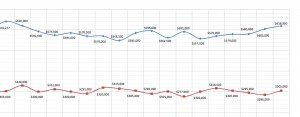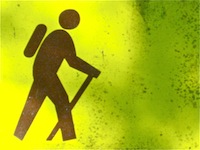Aloha. Once again, I continue to hear encouraging feedback from folks in the industry about a promising future and rebound for Hawaii real estate. Is this true? Of course, there’s no real answer and your opinion lies in the data available to you and how you use them.
On one hand, we have the continued ineffectiveness of governmental housing policies to encourage economic recovery. Hey, the easy judgment of that is that if everything was back on track, why would we keep needing new programs? If HAMP and the like aren’t serving their purpose, that means there’s still a need to solve the same problem, hence: no recovery.
The latest? Word that Hawaii’s own President Obama will be extending the 2007 Mortgage Forgiveness Debt Relief Act (which lets homeowners completing successful short sales write off their taxes from otherwise taxable deficiency waivers). The only reason to extend it beyond the current 2012 expiration date is that we’re not yet where we ought to be. I mean, that’s a quick two-cent judgment, but it kind of makes sense on the surface, right?? (By the way, I’m in favor of extending the policy as it encourages homeowners with over-leveraged mortgages to complete short sales and ideally put them back on a fiscally sound economic path and, therefore, aid overall economic health).
The other view is that we’ve seen 5 straight months of rising median sales prices, according to data by the Hawaii Board of Realtors. The data doesn’t lie, but they’re just numbers. That’s the difference between data and information. Information tells a story.
So what are the implications of this 5-month run? Does it mean we’re out of the doldrums and can expect a continuation of the current trajectory? Are Hawaii housing prices expected to keep creeping north? Possibly. Then again, January’s median price of $618,900 (single family) isn’t far from September 2010’s price of $620,000. If you’re following along, then you know what that means — prices must have dropped after that month in order for a 5-month run to bring us right back to where we are.
Cycles, my friend. Cycles. It’s all in what you make of the data. We could see another dip similar to before or this might be the last one that sees climb out of the tip into a brighter day.
I will say this — the one thing that sort of crushes the cycle idea is that surrounding factors are always changing. Today’s geopolitical environment is a powder keg. Syria’s on the brink of civil war as Assad refuses to cede power. Iran is threatening everybody with nuclear bravado, especially Israel, which history tells us is a bad idea (see: Baghdad). And Greece is once again with empty pockets asking for a handout.
Does this affect Hawaii housing? It certainly has ripple effects through the American economy, so I’m very inclined to say “yes”.
Your thoughts?


